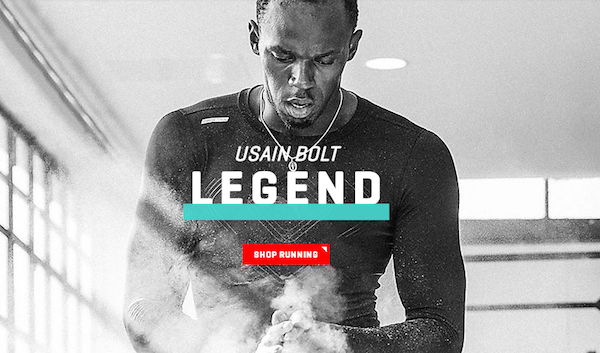When it comes to buying shoes online, the behemoths like Amazon and Zappos have a lot to offer, with their low prices, speedy shipping and free returns — advantages that a single brand can’t compete with.
That was the issue Puma considered about two years ago when it was looking for ways to jumpstart its online sales. At the time, it had two sites, one devoted to the brand and one for commerce. Each pointed visitors to the other, but the experiences were inconsistent (not to mention the sites weren’t responsively designed).
Puma decided to merge the two sites into one with the hope that by surrounding product images and buy buttons with stories about the products would encourage people to buy.
“My main struggle is, why would a kid come to Puma today?” said Remi Carlioz, global head of consumer marketing at Puma with responsibility for digital. “Today, they’re used to shopping everywhere — social media, Zappos, Amazon. We can’t necessarily compete on price, delivery. What we can compete on is exclusives, brand message, access to exclusive offers.”
The line between publishers and brands is blurring as brands seize on content creation as they strive to connect with consumers who have grown blind to traditional display ads. For Puma, it saw that stories about athletes and teams, in a richly designed site, could inspire consumers in a way that the online giants didn’t.
Puma looked at dozens of sports and retailer sites including those of J. Crew and Kate Spade before tackling its own. The result, which launched in the U.S. on July 31, is a photo-driven site with sports tabs that include profiles of famous athletes, like this one on Usain Bolt, and teams like Arsenal. Apparel and buy buttons are woven throughout. Tech company Acquia supplied the technology behind the CMS.
Ad position: web_incontent_pos1
It’s paid off. Puma remains a dwarf in the online space — its October unique visitors were 331,000, compared to 12 million for Zappos, per comScore’s multiplatform numbers — but the big benefit Puma has seen from its now-responsive site has been on the mobile, the device of choice of Puma’s target customer base of 18- to 24-year-olds.
This past Black Friday, 3.4 percent of mobile shoppers on Puma.com ended up making a purchase, up from 1.6 percent on Black Friday the year before.
“Previous to this launch, we had a brand site and a regionalized shopping site,” said Chris Hardisty, general manager and head of e-commerce at Puma. “It wasn’t what you’d call a unified experience for the customer.”
While some brands have a dedicated “newsroom” that takes care of editorial content creation, Puma’s effort is more decentralized. There’s a dedicated team of about three that works under Carlioz. Category-specific content comes from the business units that are responsible for those categories, like running, fitness and football. Puma’s geographic regions also contribute content. Across those three sources, content is updated each season, with smaller updates on a monthly and weekly basis.
Ad position: web_incontent_pos2
One reason publishers struggle to integrate commerce into their editorial strategy is that the two uses are intrinsically at odds: when someone clicks on a product to buy, they’re no longer contributing to time spent on site. Brands, meanwhile, have the opposite tension: With the main raison d’être of the site to push product, content can get in the way.
“I think there’s always going to be tension between content and marketing, because the retailer’s operation is maniacally focused on this month, this week, selling as much as they can, and the marketing side is setting the brand up for long-term success,” Hardisty said.
That said, he added, Puma has largely avoided such turf wars by creating stories that are product- and brand-focused and tying in shopping features high up, to ensure the content and commerce work hand in hand.
“Any company wants to inspire customers,” he said. “This site gives us a much better vehicle to do that.”
More in Marketing

In the marketing world, anime is following in the footsteps of gaming
As marketers look to take advantage of anime’s entry into the zeitgeist, they might be wise to observe the parallels between the evolution of anime as a marketing channel and the ways brands have learned to better leverage gaming in recent years.

With the introduction of video ads and e-commerce, Roblox looks to attain platform status
Roblox is expanding into more areas than just ads in 2024. Much like platforms such as Amazon and Facebook have transcended their origins to evolve from their origins as online marketplaces and social media channels, Roblox is in the midst of a transformation into a platform for all elements of users’ virtual lives.

PepsiCo wants to remain a ‘driver of culture’ as it turns to influencers and activations amid rebrand
The soda-maker says it can translate cultural relevance into sales volume.
Ad position: web_bfu

